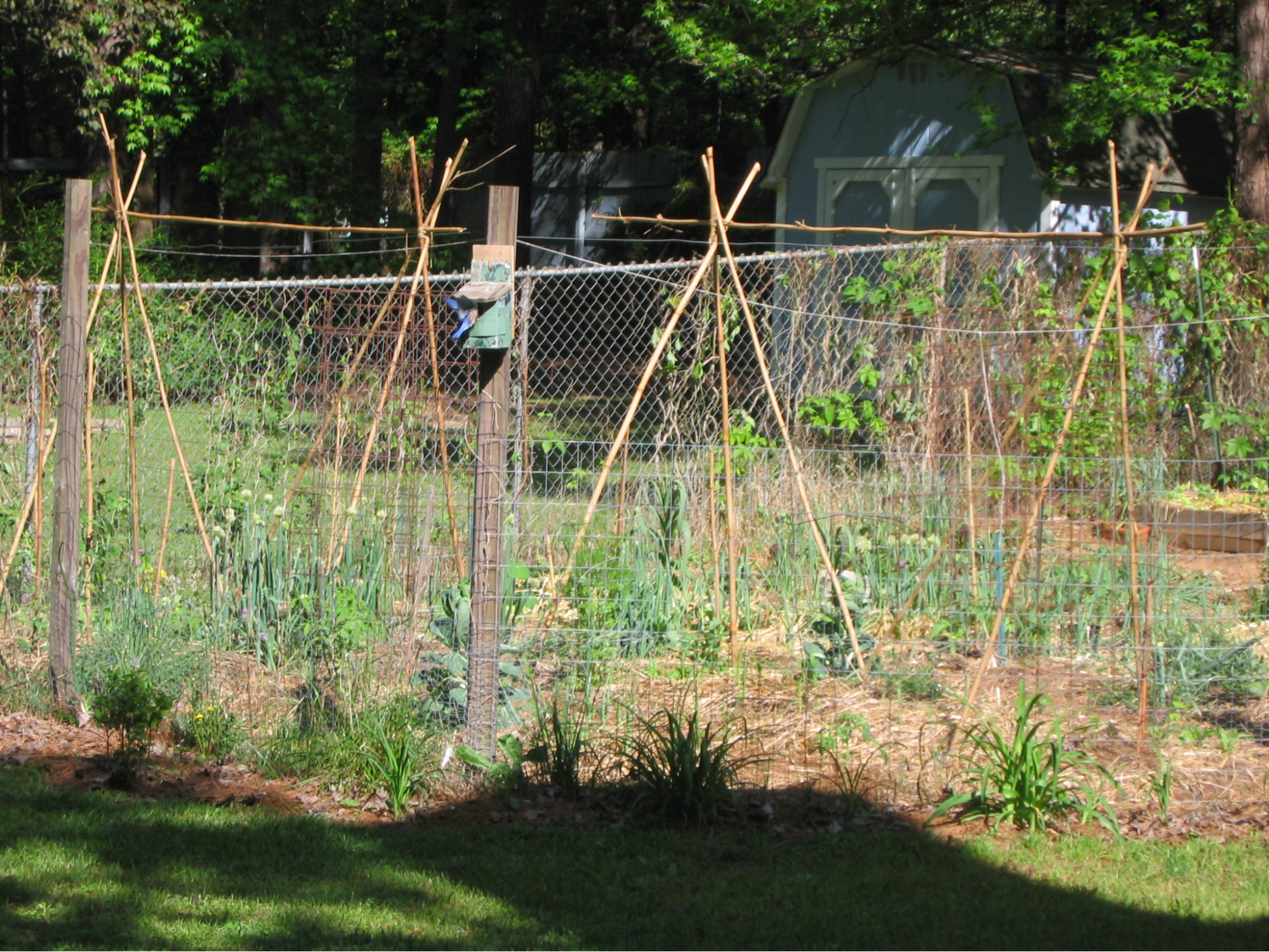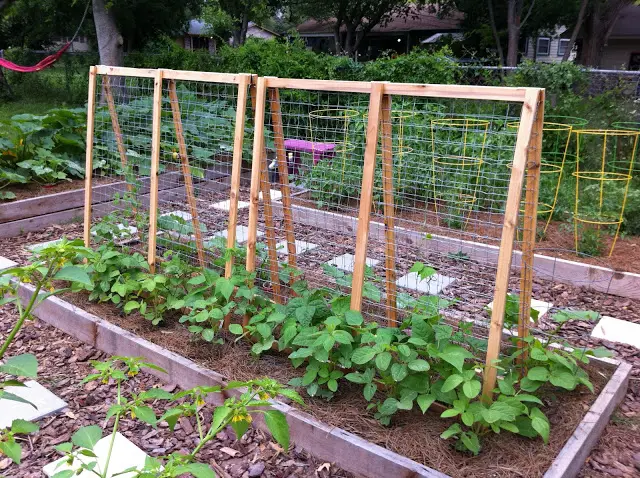So, you may have planted pole beans in your garden, but recently you notice that it is outgrowing the trellis.
So, why are pole beans outgrowing trellis?
Pole beans can outgrow the trellis if you don’t prune it regularly, or they are not trained to climb the trellis, etc. Pruning pole beans and training them while they are planted will fix the issue. Also, you should use a taller sturdy trellis made from the bamboo teepee to support the outgrowth.
With quick fixes to the problem, this article provides a great gardening care guide for pole beans. So let’s dig in.
Pole Beans Outgrowing Trellis: Reasons And Remedies
Vertical-growth pole beans require support because they grow too fast. Usually, pole beans are grown quite tall which is almost around 6 to 10 feet or maybe more. Naturally, these pole beans produce a large amount of foliage and beans.
So it’s not uncommon for them to outgrow their trellis. In order to understand them better, let’s have a quick peek at reasons and remedies.
| Reasons | Remedies |
| Lack of Pruning | Ensure proper pruning |
| Insufficient training of the beans | Provide enough training |
| Not using taller trellis | Use taller trellis |
| Not having additional support | Provide enough additional support |
It’s time to explain them in a detailed manner so that you can learn the reasons and remedies to fix them on your own.
Reason 1: Lack of Pruning
The leading reason for an outgrowing trellis is the lack of pruning. Pruning helps to prevent pole beans from outgrowing their trellis. Pole beans grow quickly and can become quite tall, so pruning can help keep the plant compact and manageable.

Lack of pruning is also the reason for your clematis flowering only at the top. If you don’t prune your pole beans regularly, they become ultimately bushy and dense that cause them to outgrow their trellis. Also, excess foliage can cause the trellis to bend or collapse because it creates a lot of weight.

Remedy:
You need to prune the pole beans regularly to prevent the plant from becoming too heavy and overwhelming the trellis. Simply remove the side shoots or streams that are growing from the main stem of the plant.
This will help keep the plant more focused on growing vertically and producing beans. Moreover, you can prune diseased stems from your pole bean. Usually, diseased stems are typically discolored or spotted, making them easy to identify.
Cut these stems several inches away from the infected area and remove them from your garden. Pruning is also helpful in clearing your dianthus that looks dead.
Reason 2: Insufficient Training of the Beans
Some varieties of pole beans are simply more vigorous than others and can grow very quickly and aggressively. This can cause them to quickly outgrow their trellis. Insufficient training of pole beans contributes to the plants outgrowing their trellis.
Remedy:
Pole beans need to be trained to climb up trellises when they are first planted. If the beans are not trained properly, they may become tangled or grow in a direction that does not follow the trellis, causing them to outgrow it. Training is one of the vital parts of growing pole beans.
As the vines grow, you need to train the pole beans. You can do it just by simply maintaining the guideline below.
- Always plant your pole beans close to the trellis. The beans will have an easier time climbing up the support structure.
- Then, wrap the beans around the trellis gently to the support structure with twin or soft plant ties.
- To encourage the plant to produce lateral branches and more beans, prune the growing tip once the beans reach the top of the trellis.
Reason 3: Not Using Taller Trellis
If you don’t use a tall enough trellis, the pole beans can outgrow the trellis. This is because pole beans are vigorous climbers and can quickly grow up around 8-10 feet or more.
So, if the trellis is not tall enough, the beans will grow upwards until they run out of support and collapse.

Remedy:
Always choose a trellis that is tall enough to accommodate the height of your pole beans. Eight to ten feet is the recommended height for the trellis.
Also, make sure the trellis is sturdy enough to support the weight of the beans and the growing plants. You can use poles or tall sticks to support the beans as well.
Reason 4: Not Having Enough Additional Support
Pole beans are a climbing kind of plant that can grow quite tall. That is why it requires additional support. Sometimes only the trellis could not support the pole beans, and you need to provide extra support for the beans.
Remedy:
You have to provide additional support like stakes or twine for the pole beans at least throughout their growth period.
Gardening Care Tips for Pole Beans
Pole beans ask for some care if you want to grow in your garden without any hassle. You can’t just expect perfect pole beans without taking proper care. So, let’s find out how you can ensure the proper growth of your pole beans.
- You have to choose a perfect trellis for your pole beans. Bamboo teepees are known as the perfect trellis for pole beans. It’s a traditional and straightforward trellis structure that’s perfect for growing crops such as pole beans, peas, and even cucumbers.
- You should plant the pole beans in full sun for higher growth and productivity. Bright sun exposure also prevents calla lilies from turning green. The beans need at least 60 degrees F temperature. However, it can grow in partial shade as well.
- Pole beans need one inch of water per week. This plant requires consistent moisture. Especially their growing months require heavy moisture. While watering you should avoid watering the leaves. Because it’s prone to blights and molds.
- Well-drained soil is one of the most important requirements to grow pole beans successfully. The pH level of the soil has to be between 6.0 to 6.8. They grow best in sandy loam soil, while clay soil reduces the number of pods they produce.
- Fertilizing your pole beans is one of the best things you can do with your plant. choose one with a low nitrogen-to-phosphorus and potassium ratio, such as 5-10-10.
- Fertilize these plants by incorporating aged manure into the soil before planting. You should spread the manure evenly over the planting area and mix it well with the soil at a depth of approximately 3 inches. You can apply more aged manure as a side-dressing after the pole beans reach a height of about 4 inches.
Frequently Asked Questions (FAQs):
What Are The Diseases Pole Beans Can Suffer From?
Pole beans can suffer from multiple diseases like bacterial blights, mosaic virus, fungus, etc. Rotate your crops every year to avoid bacterial diseases that can build up in the soil. Also, you can use copper-based fungicides to help prevent bacterial diseases.
How To Control Pests From Pole Beans?
To control pests from pole beans, Sevin, a pesticide is best. It contains Carbaryl and is offered in both liquid and powder forms. The powder formulation is used to dust bean plants and effectively controls beetles and other pests that infest pole beans. On the other hand, the liquid form is diluted with water and applied as a foliar spray.
Why Are My Pole Beans Stringy?
Pole beans are stringy because pods develop fibrous strands when exposed to stress. Then, beans could be left on the plant for too long and become overripe which can also make them tough and stringy. Finally, certain heirloom varieties, also known as string beans, have a natural tendency to produce these fibrous strands.
Conclusion
Hopefully, you’ve been able to shed some light on the issue of pole beans outgrowing trellis by reading the article.
We hope this article will provide you with some solace if you already suffer from an outgrowing pole bean problem. It’s better to seek professional help if the situation is out of control.
Happy gardening!
- Why Are There Still No Tomatoes in My Tomato Plants? Let’s Fix the Issue! - July 13, 2023
- Water Propagation White Stuff on Roots: Everything You Should Know! - July 11, 2023
- String of Dolphins Drying Up: Solved! - July 11, 2023

